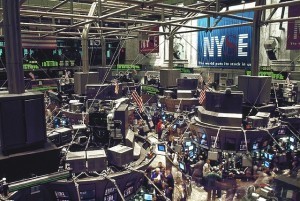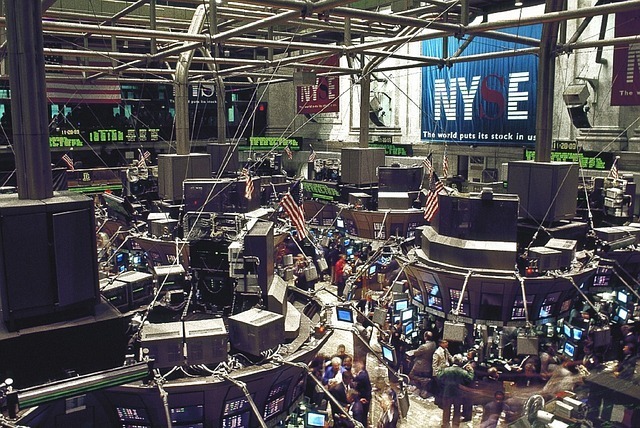 Investors were in for a wild roller coaster ride as volatility held the equity market in its jaws in a precarious seesaw movement for a second week in August 2015. All the widely touted theories about having a good mix of high and low beta stocks which would help investors weather any downturns in the market were rendered powerless against the onslaught of the turbulent market, following a move made by Panda giant China to fire up its economy. Market watchers speculated on why China thought its economy needed an additional push, while this economic second-in-command shows evidence of slowing growth after being a visible driver of global prosperity over the past few decades.
Investors were in for a wild roller coaster ride as volatility held the equity market in its jaws in a precarious seesaw movement for a second week in August 2015. All the widely touted theories about having a good mix of high and low beta stocks which would help investors weather any downturns in the market were rendered powerless against the onslaught of the turbulent market, following a move made by Panda giant China to fire up its economy. Market watchers speculated on why China thought its economy needed an additional push, while this economic second-in-command shows evidence of slowing growth after being a visible driver of global prosperity over the past few decades.
Everywhere in the developed western world, the pattern was the same – a steady rise followed by a bigger slide to a lower level:
- The Chicago Board Options Exchange Volatility Index dropped 15% Wednesday to 30.76. The VIX, which measures market turbulence, declined two days in a row after a record six-day jump sent the index to its highest level since 2011.
- The Stoxx Europe 600 Index slipped 1.8% after dropping by 2.7%, and then gave false hope by gaining back all of its previous losses before spiraling again.
- Standard & Poor’s 500 Index jumped 3.9%, by far the most encouraging in four years. Traders witnessed a spectacular rally after the opening of trading, only to see a 2.9% rally disappear during the last hour, ending with a 1.4% loss.
This frantic sawtooth stock market movement, weaving in and out of the positive zone, gaining some and losing more, has become a feature of this market volatility. In a stock market which had gone close to four years without experiencing a 10% correction, this resurgence in volatility is disquieting for many investors.
Asian and European markets, on the other hand, jostled to find a floor in the midst of one of the worst equity swings since the 1987 crash. Gainers were exceptions to the rule, as any positive investor sentiment was not enough to give equities a much-needed push:
- Hong Kong’s Hang Seng China Enterprises Index liquidated its gains, closing 0.9% lower.
- The Shanghai Composite fluctuated wildly during trading, dropping as low as 3.9%, and then increasing to 4.3% before closing down by 1.3%.
- The Bloomberg Dollar Spot Index showed a jackrabbit start, jumping 0.7%, and was one of the gainers, registering a gain of 1.7% to $1.1328 per euro and 0.8% against the yen.
- Canadian equities erased a 1.6% surge in their first half hour of trading.
Stocks were not the only participants that succumbed to market volatility – commodities did too, resuming their decline following a reprieve:
- Crude traded below $40 a barrel. Rising US crude stockpiles and declines in China’s stock market fanned concern that lower demand may add fuel to the already overburdened glut in the market, further pushing the price down.
- After rising by 1.4%, West Texas Intermediate fell 1.8% to $38.60 a barrel.
- Precious metals fell by 2.6%.
- Gold decreased by 1.2%, down to $1,124 per troy ounce.
Although investors attribute their uncertainty and apprehension to the events taking place in China, these events are not wholly responsible, because of the interplay of other factors. The devaluation of the Renminbi (RMB), the slowing of the economy, and declines in China’s stock market are just some of the reasons given by speculators.
Other factors include the potential increase in interest rates by the Federal Reserve in the United States, leading to mounting apprehension of a negative effect on global economic growth. The possibility of a near term rate increase, however, has become more remote given the global scale of the sell-off in stocks, which has weakened the case for higher rates.
Conclusion:
The recent market volatility has demonstrated why investors need to take a long-term view when investing their retirement savings, instead of making hasty decisions based on day-to-day or short-term developments. This entire episode has also highlighted why beta and other measures of volatility serve little value in determining great quality investments that can build wealth for investors in the long run. With a long-range investment horizon, the investor has a greater chance of recovering from losses if the investment is maintained, since over the long term equity markets tend to rise and are a good way to combat the effects of inflation.

